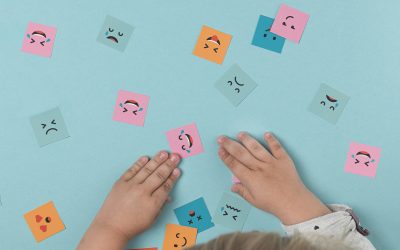Why is it important to set healthy boundaries with your kids?
Setting boundaries is about establishing your own presence with others. Children can better interpret themselves and their surroundings when they recognize their own presence and boundaries. These boundaries provide children with a secure and well-defined space that the child can explore and learn. Moreover, children will be more comfortable to grasp the outside world with capable parents effectively defining limitations.
How to do it…
Clear and unambiguous rules are easier to understand for children. They may get confused and become unable to follow complicated rules.
Another important aspect of rule setting is consistency. Parents should agree on the rules and implement consistently, at all times. Your child will conclude that “if it is broken once, it can be broken again” when rules are not implemented consistently. This will give a temporary feeling of triumph to children and encourage them to try flexing your rules every time. It is quite likely for children growing at homes where rules are not clear and consistent to struggle adapting to school and social life.
Children can easily internalize values that are exhibited by their parents. They continuously observe parents and take them as role models. Hence, it will be much easier for children to follow established rules and values of their home.
Finally, rules should be pre-determined and explained to children. They would appreciate a short conversation about rules and under which circumstances they are applicable. This would also help them adhere to the rules.
It is not advisable to continuously restrict children and try to implement rules excessively. Parents had better prioritize potential rules and pick the ones that are really necessary to implement.
3-Step Effective Limit Setting
1) Acknowledge the feeling
2) Communicate the limit
3) Target alternative behavior
1) Actively listen to your child with empathy. Provide validation through repeating what they have said in your own words to ensure you understand.
“Sean, I understand you find it fun to paint the walls…”
This step will pass your child that her/his feelings, needs are acknowledged by the parent and will bring down the emotion or the need to the behavior that requires limiting. Secondly, when a person is validated, they are much more likely to listen what you have to say.
2) Communicate limit in short and clear sentences. Remain calm, be mindful of your tone and nonverbal body language.
“…But the wall is not for painting.”
3) Target alternative behavior. You can provide one or more options depending on the situation and you child’s age. Think about possible solutions for future situations so that your child has ideas for handling similar situations better next time.
“You can use the painting papers (showing the papers) for your drawings.”
If your child does not follow the rules…
- Repeat the rule with a calm voice. Make sure you establish eye contact with your child and come down to her/his eye level.
- Sound decisive yet not so hard and say “…. this is what I expect from you”. Don’t seem hopeless by saying “please, may I request, I beg from you etc”
- Aggression, shouting or using strength do not help the child to follow the rules and results in disrespect and fear from the parents.
- Apply the consequences of breaking the rule if your child insists on the behavior even after repetition. “It is cold outside and you do not want to wear your jumper. We are not going outside in that case.”
All in all, having clear limitations for your children is a very important way to show love to your children. Children without limits and boundaries will meet conflict and disapproval when they face the world.
BrightKids Preschool Counselling




